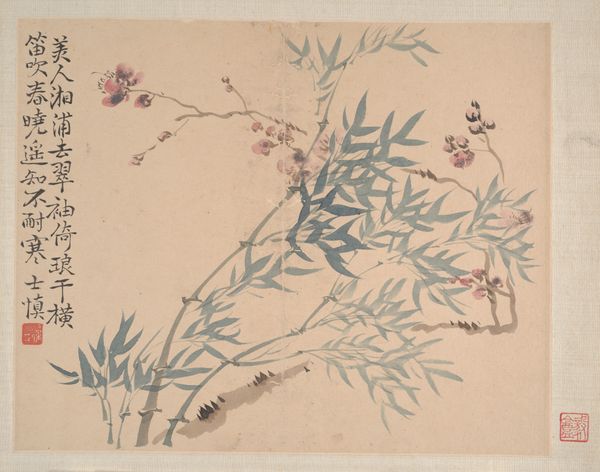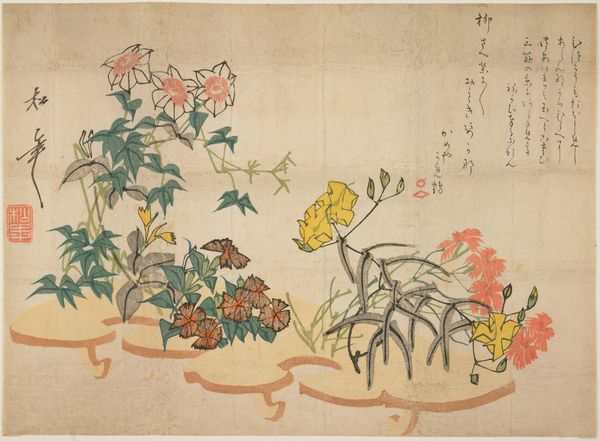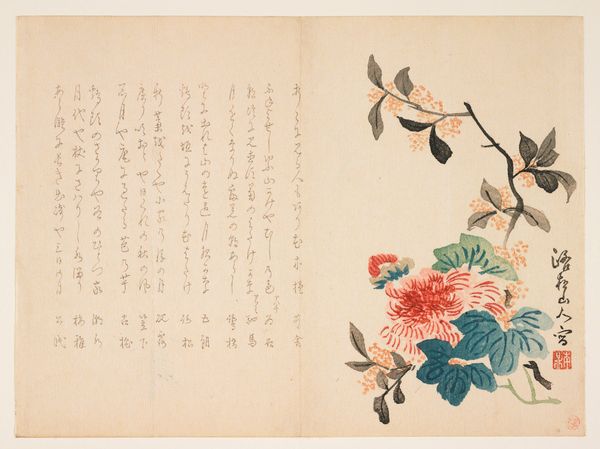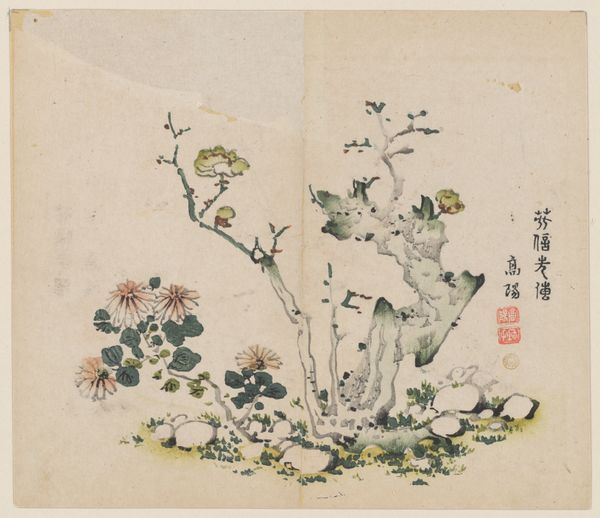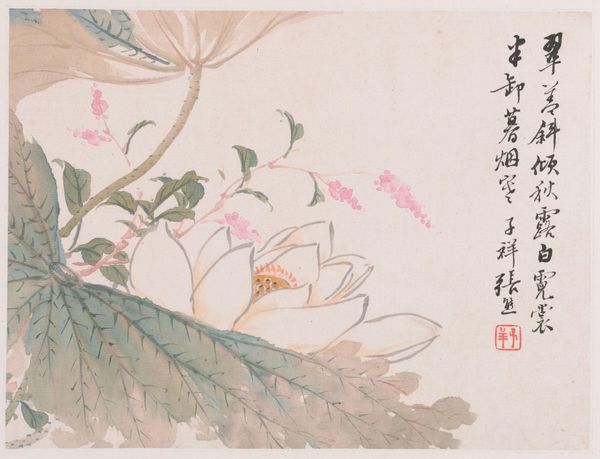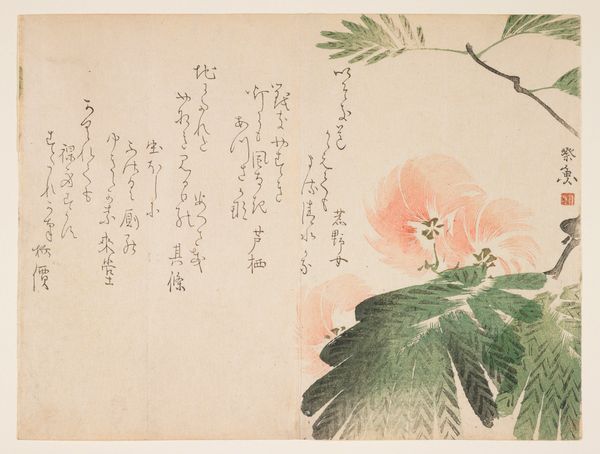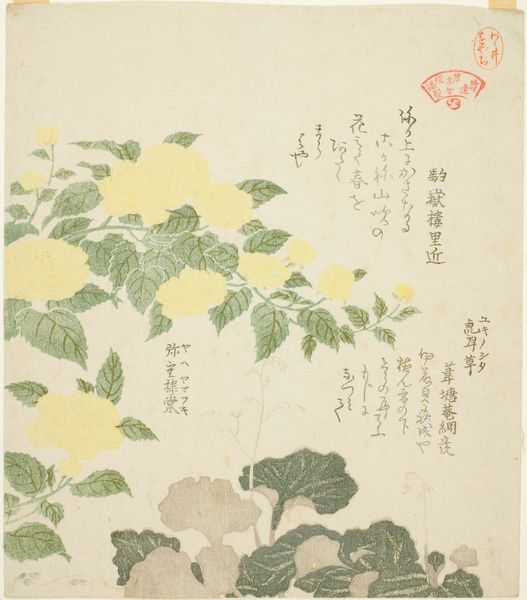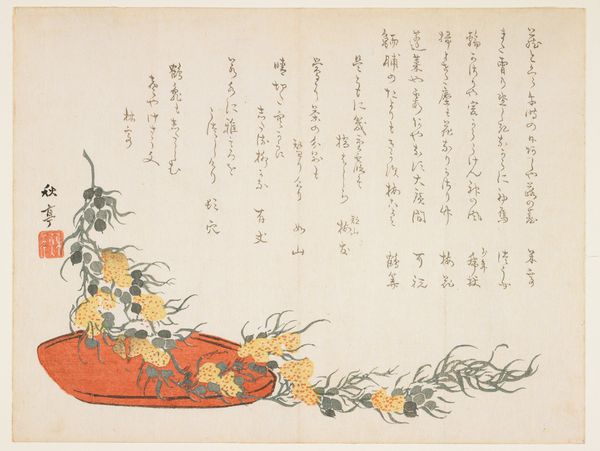
Copyright: Public domain
Editor: This watercolor on paper, "Straw Basket for Fish and Mokuge Flower," was painted in 1875 by Shibata Zeshin. I'm struck by its quiet elegance. What do you see in this piece, looking at it from your perspective? Curator: This image provides insight into the artistic exchange between Japan and the West during the late 19th century. The work belongs to the *ukiyo-e* tradition, reflecting the everyday, but it’s also strongly influenced by Orientalism. How do you think this piece engages with Western expectations of Japanese art, particularly in how it presents nature and daily life? Editor: I guess it romanticizes a certain kind of rural simplicity, like it's intended to appeal to a Western gaze that wants an 'authentic' image of Japan. Curator: Exactly. Works like these played a significant role in shaping Western perceptions and reinforcing certain stereotypes, wouldn’t you agree? Furthermore, the selection of subject matter like a humble straw basket, next to the beautiful mokuge flower, it’s carefully positioned within socio-economic currents and art markets that valued particular narratives about Japanese culture. It's fascinating how the arrangement of objects tells a political story. Editor: So it's not just a pretty picture. It's a commentary on how Japan wanted to be seen by the world? Curator: Precisely. Understanding the forces at play in art's reception lets us have more empathy toward works from unfamiliar places or times. Editor: I never considered how much an artwork could tell us about power dynamics! I’m going to think a lot more about this 'gaze' when I study art. Thanks! Curator: The social implications behind every image are an insightful road to understanding art!
Comments
No comments
Be the first to comment and join the conversation on the ultimate creative platform.

